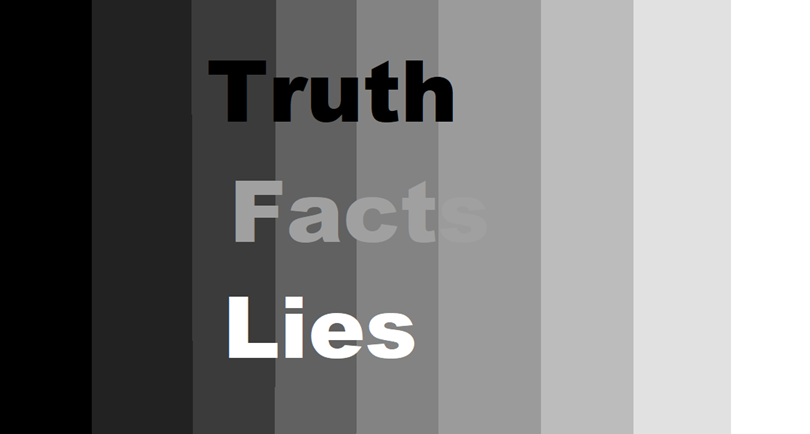Real Truths

It is hard to get reliable information. The internet is great tool but it is easy to publish just about anything. How do we tell what is the truth and what is misinformation? This is not a new problem; however, technology only magnifies the effect of publications. Anyone can write an article and claim it to be true and anyone can start a blog, twitter account, or a so called news agency. Freedom of speech is a great thing but the down side is people can make false claims. So how do we tell truth from lies?
Facts
Anyone can claim something to be factually true, but most people do not provide the proof that they should. Let us start by defining the word fact. According to Merriam-Webster online the word fact means: “something that has actual existence”, “an actual occurrence”, “a piece of information presented as having objective reality”, and “the quality of being accurate”. If you ask Google to define fact the answer is “a thing that is known or proven to be true.” The key words in these definitions are “actual,” “accurate,” and “true.” That being said, we must ensure we do our homework and make sure we do not simply believe things to be the truth just because the internet says so. So how do we tell the difference between what is a truth and what is a lie?
The answer starts with doing our research. If we hear something said that someone claims to be factual we need to check sources. All facts should have scientific proof. Meaning that there should be studies and statistics to back up the claim made. If we think back to our high school days we should remember the importance of the scientific method. Step one is to ask a question, step two is to conduct research, step three is to come up with a hypothesis based on this research, step four is to create an experiment, step five is to collect data and analysis, and step six is to draw a conclusion. It is easy to ask a question and come up with a hypothesis, but it takes time and effort to do research and make a quality conclusion. As a society we must remember the importance of these steps. A conclusion without proof is nothing more than a claim based in theory and a theory is not a fact.
Sources
Scientific facts are one thing; however, an actual event that happens is also a fact. So how do we know someone is telling the truth when they tell a story about an event. These also brings us back to our school days when we learned the importance of primary and secondary sources. A primary source of information is a first-hand account, written documentation or photographs, or stories from people who were actually there. A second hand account is information from sources that are one step removed from primary accounts. These can be articles written about an event that includes analysis, documentaries (please note documentaries often do include primary accounts in them), or stories based on what primary sources say about events. What we must remember is most news media provides second hand accounts of events. Qualified reporter’s interview or view primary sources of information and write about it to inform the rest of us. No matter how hard a reporter tries to be accurate mistakes are inevitable and we must realize this. Additionally, we must understand that people are bias.
Unconscious Bias
People are bias by nature. We want things a certain way and we tend to think we are right. We must recognize that bias exists in the media no matter how objective a person tries to be. That is why it is called unconscious bias. A lot of the time people do not realize they are doing it; although, part of the time people do it knowingly. Being able to tell the difference is difficult but important. One media outlet might report a story completely differently than another. So how do we know who to believe? Well the answer is simple. Look at the facts and look at the sources. If we find bias try to identify where it comes from and attempt to filter it out. It is good to read multiple perspectives of one occurrence or issue. This allows us to see what reporters agree on and what they disagree on. It helps us filter fact from opinion and allows us to draw our own conclusions. So if you are interested in an event make sure to get multiple perspectives and create your own opinions based on the primary sources and the facts. We do not have to write an essay about the topic but it is always good to be properly informed.
Claims
We come across claims every day. Stores claim to have the best merchandise and the best price, companies claim to have the highest customer satisfaction rating around, and people claim to know the truth about situations. We must not allow claims to dictate our actions or decisions. If we want quality information we must be diligent and ensure we do things the right way. So make sure not take believe everything you see or hear, make sure to form your own opinions, and make sure to have the most up to date facts. By doing these things we can ensure we get the best information and we can ensure we make choices that are in our best interests. Anyone can make a claim, only people who provide facts should be believed.














































